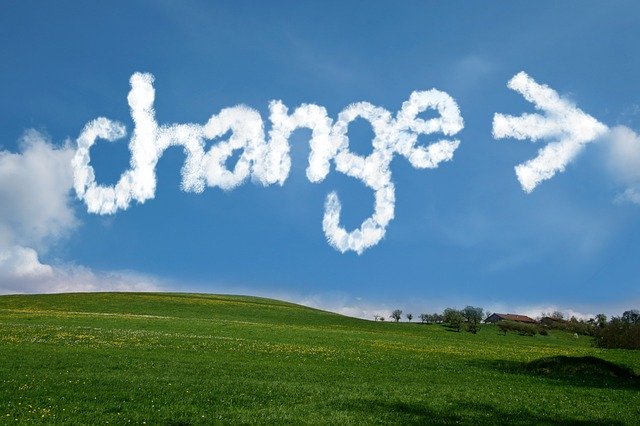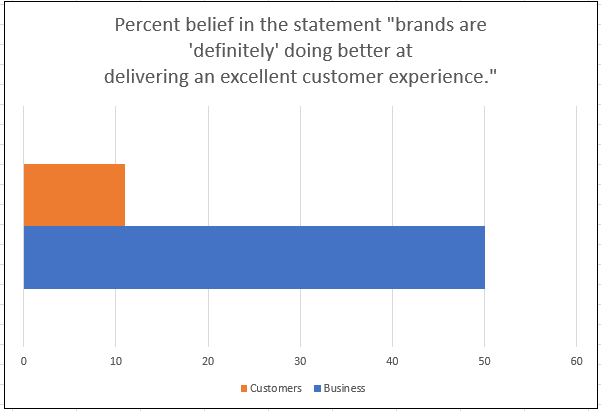It was less than 2 years ago when Sarah experienced the frustrating and draining challenge of trying to get out of her 5-year water heater contract. She called the provider, Reliance, to cancel the remaining 2 years of her contract so she could purchase her own water heater. She knew that she would have to pay some sort of penalty. But she never expected to pay so much to break her contract.
Reliance told her that she would need to buy-out the remainder of her 2 years in one-lump sum payment, plus the interest the company would lose over that 2 year period and she would have to pay an additional hefty administration fee too. The administration fee alone totaled nearly 3 of her monthly payments. In total, Sarah would have to pay nearly $1,200 more to break her contract than to let it run out.
In the end, Sarah decided it wasn’t worth the time, hassle or the money, despite wanting out of her contract.
Sarah experienced the pain of an old business paradigm – a model where customers are at the mercy of companies. In this model, customer opinions and their experiences are secondary to those of the company.
As more companies move to SaaS and subscription-based models of revenue, however, this old paradigm is crumbling and a new customer-centric one is rising. The new customer-first model moves the balance of power from the company to the consumer. And with this change comes a new focus on an ever-shifting concept – customer expectations. Companies that tune into what their customers expect in terms of product, service, price and experience will ultimately succeed in this new paradigm. The challenge, of course, is in figuring out exactly what customers expect.
The New Customer-First Paradigm
It’s no surprise that in this new business model customers hold the power–they expect better service, better products, better experiences and better prices from companies they purchase from.
Customer expectations are rapidly increasing. And it’s up to businesses to keep up with those expectations.
The shift to the customer-first paradigm has happened quickly in SaaS and subscription-based economy. As a new, and in some ways more preferred revenue model, new players are entering the SaaS and subscription market every day. In fact, growth is so fast in SaaS, that enterprise SaaS revenue hit a $100 billion run rate in Q2 in 2019.
This rapid market growth has many implications, both positive and negative for both the business and the customer.
For the customer, this rapid growth has created two powerful trends:
- An increased opportunity to switch to competitor for the same product at a reduced risk
- An increased power of consumers to demand better—product, service, prices, and customer experiences
For businesses, these two consumer trends can either be viewed as a detriment or opportunity. Older, slower-to-respond companies will likely view these trends negatively.
Forward-thinking businesses, on the other hand, will see these two trends as opportunities to differentiate themselves from the competition and as a chance to increase customer retention and loyalty.
Trend 1: The power to switch

As we saw in the old business paradigm, customers used to have a limited ability to switch to competitors without incurring risk. Think back to Sarah’s scenario where she risked having to pay an increased penalty by breaking her contract early. Companies in the old model create barriers to switching as a method to dissuade customers from leaving. These include long contracts, expensive penalties, and long wait times for very limited services.
But as competitors slowly entered the market and competition for customers increased, these barriers which used to prevent or dissuade customers from switching were removed. Suddenly it became much easier for customers to move to a competitor.
We’ve seen a similar trend in SaaS with falling switching costs. Less than fifteen years ago, first-to-market SaaS had few competitors. They usually had between three and five main competitors. Back then, the cost for a customer to switch from one company to another was relatively high as features and benefits were distinctive and unique to each platform. For customers, it was often a difficult choice to switch because it meant buying a product on features which may or may not be available in the competing product. Switching to a competing product meant risking the loss of valuable features and risking possible unintended consequences.
Today, these same SaaS businesses have so many competitors with similar features and benefits that switching costs have become relatively low. For the customer, the risk of losing features by moving to a competitor or having unintended consequences from switching is nearly non-existent.
As more SaaS and subscription businesses emerge with similar features and benefits, switching costs will continue to drop and increasingly disappear. In some verticals, this rapid decline in switching costs, coupled with an increase in market competition, has led to the virtual disappearance of risk for the customer. The risk to switch is so low that one survey found that 63% of DTC customers leave after one poor customer experience.
For consumers, the decrease in switching costs is liberating. Customers who expect better products, better service, better experiences and better price are now increasingly able to simply choose another company when they’re not satisfied.
For companies, this increase in competition and lower switching costs means, to retain their customers, they must provide a great product, great service, high value, competitive prices and great customer experiences (CX).
Companies can relatively easily cope with the demands of better prices, better products, more features, and better service. Overall, these are easy to measure and can be addressed in a relatively straightforward manner.
Conversely, meeting increasing customer expectations and demands for better CX is not so straightforward. It’s a challenge to understand, let alone meet, something which is in constantly changing and difficult to quantify.
Yet this imprecise expectation of better CX is where vast opportunity lies for businesses to retain customers, increase loyalty and to differentiate from the competition.
Trend 2: Demanding better – prices, service, product and customer experiences

Let’s jump right into the statistics on CX. Inmoment surveyed 1,000 customers and 300 brands in the United States to discover where both groups either aligned or disconnected on various customer experience topics. The survey found 50% of brands thought they were getting better at delivering an excellent CX when in reality, 11% of customers thought brands were getting better at delivering an excellent CX.

Why does this chasm exist?
There are three reasons why companies think they are getting better at providing an excellent CX while customers believe the opposite.
It all comes down to three things:
- inherent bias
- CX being subjective
- too many variables
We’ll look at each reason and how it applies to increasing customer retention.
1. Inherent bias

Every person has biases. Some might be obvious. Many are not. Given businesses are a collection of people, biases are naturally present. Humans often grossly overestimate or underestimate their abilities and the impact of their actions.
It’s tough for businesses to make changes and then evaluate the impact of those changes without bias. Most companies opt to evaluate the outcomes from change by the same team that implemented the change. The problem with this is due to a cognitive bias called confirmation bias. Confirmation bias is when an individual incorrectly interprets outcomes because of the tendency to look for data that conforms to their hypothesis. This bias can be seen when teams evaluate the changes they’re making in a more positive manner. To illustrate this bias, think back to the example above where 50% of brands thought they were getting better at delivering excellent CX while only 11% of customers agreed. This gap is the result of confirmation bias in the companies.
To avoid this tendency to view outcomes with a positive slant, the best practice is to have an outside party evaluate the data, especially when a subjective element like CX is being measured. This outside involvement can include hiring consultants, agencies, or even recruiting members from other teams or departments. Given this outcome data will be used to make strategic decisions, the more accurately it is evaluated the more confident a team can be that the decisions it makes from this data are correct.
Inherent human bias—like seeing more positive outcomes from changes we’ve made–only partly explains why brands perceive their efforts to improve CX as being significantly better than customers evaluating those same efforts. In the next section, you will see how subjectivity plays a big role in defining CX and the impact it has on retention.
2. Customer experience is subjective

Quantitative data is easy to measure. Qualitative data like measuring subjective experiences, however, are not. Tools like NPS and Customer Satisfaction Score (CSAT) apply quantitative measures to a subjective experience. They give broad, general indications of CX but are simply insufficient to deeply understand how customers perceive their experiences.
To best understand how customers define CX, companies also need to include other evaluation tools like surveys, focus groups and interviews to their quantitative tools like NPS and CSAT. While more labor and time intensive, qualitative measures give specific indications of what customers truly want and what they value in their CX.
Companies that want to retain customers longer, must understand exactly how their customers define excellent CX. It goes without saying that asking 100 people their definition of excellent CX and you’ll yield 100 different responses.
Despite the vast array of responses, themes can be easily identified in the data. For example, a common theme among customers around excellent CX is around being treated like a person and not a number.
Measuring subjective topics like CX is challenging. But the reward of the effort is in gathering more powerful data that more accurately assesses what your customers want and expect. Using surveys, focus groups and interviews leads to powerful insights that can be leveraged across the company—in marketing, sales, product, and customer success. Product can develop new features or new products. Sales, customer success and marketing can better understand customer needs, wants and goals from this rich data and make necessary pivots toward those.
Needless to say, the better a company understands what its customers think, feel, believe, and value, the better it will be at retaining customers by pivoting toward those desires.
3. Too many variables

Piggybacking off the subjective nature of CX, the customer’s viewpoint is also confounded by the immense number of variables that make up CX.
When businesses undertake experiments to improve CX, they focus on either one or a few variables at a time to evaluate whether the change they’re making has a measurable impact. For instance, a company might choose to improve CX by decreasing customer support wait times by 15%. If wait times are decreased by the goal value of 15%, the company would see this experiment as a success.
To the customer, however, a single variable like 15% reduction in wait times might not even be noticed. This is because customers are constantly evaluating businesses on excellent CX across numerous variables all at the same time. These variables include customer support, perceived value of the product, ability to achieve their goals, ease of tasks, UI, communications, tech support, and speed of problem resolution, just to name a few.
While businesses evaluate their CX improvement efforts singularly and for finite periods of time (like the 15% reduction in wait times), customers do not. Customers reflect back on their previous experiences with the company and will use those to evaluate the company in real time. Only qualitative methods like surveys, focus groups and interviews will highlight all the variables customers are using to create their definition of a good CX.
Only when companies have a better understanding of the criteria customers use to evaluate CX, will they be able to make impactful changes on the variables that have the greatest impact on CX and retention. And by continuously talking with customers via surveys, focus groups and interviews, companies will be able to spot new changes in those variables and start responding proactively to them rather than reactively.
Conclusion
Customer expectations and demands will only grow in the future as more SaaS and subscription services enter the market, product features and benefits converge, and switching costs continue to decline.
As it stands right now, one thing is clear–customers want better experiences.
Businesses that want to remain profitable and competitive in the future, will need to get to know how customers define excellent CX. This will be critical, especially for retaining those hard-fought for customers.
In an ever increasingly competitive environment, companies that excel at customer communications—collecting and leveraging customer feedback, and treating the customer as a highly-valued individual—will reduce churn, increase customer loyalty, and differentiate themselves from their competitors.
Originally published in Profitwell’s blog




